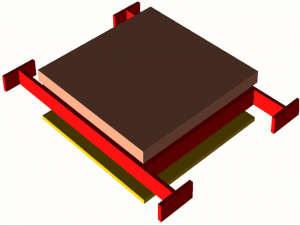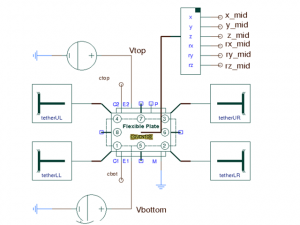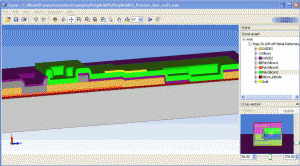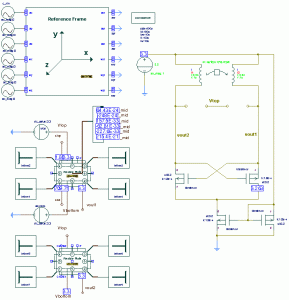Variable CapacitorThe PolyMUMPS varactor is a gap-tuning structure, see image below and schematic below. The design consists of a three parallel-plates with the central one suspended by T-shaped arms between two fixed electrodes. One electrode lies on the silicon substrate coated with nitride (poly 0), the second rigidly suspended above the mobile plate (poly 2). Thus the device consist of two variable capacitors in series. One is used for RF applications (e.g. a VCO) and the other is considered as a parasitic. (The one with the smallest capacitance which means the bottom capacitor in this case).  3D Solid model in CoventorWare DESIGNER  Hierarchical schematic in CoventorWare ARCHITECT3D of the Variable Capacitor. For process related questions a much more detailed 3D model and cross sections are often needed.  Process accurate 3D model in SEMulator3D Voltage controlled oscillatorA voltage controlled oscillator (VCO) can be constructed from the variable capacitor. The schematic is shown below and is based on a cross-coupled PMOS architecture with 2 LC tank resonators.  VCO with 2 variable MEMS capacitors Tutorial OverviewThe above material and more is covered in a short course and is scheduled for 2 short days and contains 3 exercises. There is an additional excerise, excercise 4 which can be used to extend the course durationExercise 1: Model design in Architect
Additional resources
17208374 CRF Fuente: http://info.coventor.com/memsahead/?Tag=mems%20oscillator |
¡Obtén la mejor experiencia en la web!
Descarga gratis el nuevo Internet Explorer 8
http://downloads.yahoo.com/ieak8/?l=e1
No hay comentarios:
Publicar un comentario